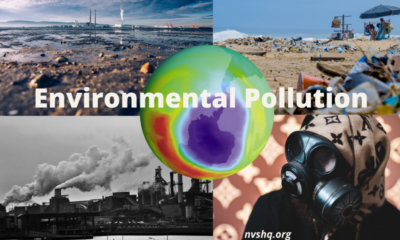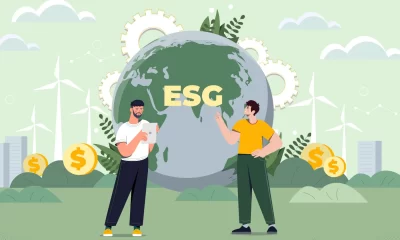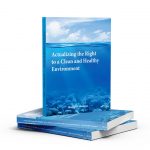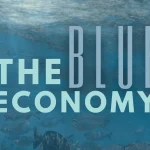By Dr. Kariuki Muigua, PhD (Leading Environmental Law Scholar, Policy Advisor, Natural Resources Lawyer and Dispute Resolution Expert from Kenya), Winner of Kenya’s ADR Practitioner of the Year 2021, ADR Publisher of the Year 2021 and CIArb (Kenya) Lifetime Achievement Award 2021*
The Natural Resources (Classes of Transaction Subject to Ratification by Parliament) Act outlines some of the relevant considerations in deciding whether or not to ratify an agreement as including: comments received from the county government within whose area of jurisdiction the natural resource that is the subject of the transaction is located; adequacy of stakeholder consultation; the extent to which the agreement has struck a fair balance between the interests of the beneficiary and the benefits to the country arising from the agreement; the benefits which the local community is likely to enjoy from the transaction; and whether, in granting the concession or right the applicable law has been complied with. Apart from these considerations, it is worth pointing out that the Constitution has also laid out some national values and principles of governance which must bind all State organs, State officers, public officers and all persons whenever any of them—applies or interprets this Constitution; enacts, applies or interprets any law; or makes or implements public policy decisions.
It is noteworthy that natural resources’ exploitation and all the related activities are meant to benefit the country as well as communities that live in the areas where these resources are to be found. The Constitution of Kenya 2010 makes provisions on “natural resources” which means the physical nonhuman factors and components, whether renewable or non-renewable, including—rocks, minerals, fossil fuels and other sources of energy. While the Act may not require ratification of all the transactions involving exploitation of different resources, it is important to note that there are other legal provisions that seek to safeguard the interests of the country and the general public as far as benefit sharing is concerned and should therefore be upheld in entering these agreements. While the Act is well meaning in its mandate, there are notably some earlier exploitation agreements that were entered into before the enactment of the Act and were not revised in line with the Act.
The Act specifically in section 16 provides that a transaction that is subject to ratification by Parliament, which was lawfully entered into on or after the effective date but before the commencement date, shall continue in effect and be deemed valid and lawful notwithstanding the absence of ratification by Parliament. The implication of this provision is that there may have been some important transactions that greatly affect communities but do not get the chance to undergo the ratification process. As a result, the communities feel sidelined as far as decision-making is concerned and the environment also gets to suffer. While there are notably other statutory provisions in place to take care of some of these issues, there is the risk of complacency in some government organs and agencies which may mean that due process may not have been followed.
There are still some complaints from some Kenyan communities about how natural resources exploitation activities within their localities are carried out and the lack of inclusion in decision-making and benefit sharing. For instance, the oil and gas mining activities in the Turkana region have been facing serious challenges from the locals who have been complaining about inadequate consultations, inadequate benefits and a general feeling of marginalization from the Government and the contractors. There have also been complaints from other natural resources exploitation about environmental degradation which directly affects the livelihoods of the communities living with such areas. There is scarce information on the existing ratifications since 2016 because, although the Act provides that the Cabinet Secretary shall establish and maintain a central register of agreements relating to natural resources and other transactions which have been ratified as per the Act as well as ensuring that on an annual basis, they publish a report on the summary of the transactions submitted under this Act and the status of ratification of transactions, there are no publicly available reports or published summary of such reports. The effect of such laxity on the part of the Ministry is violation of the right to information which is useful for public participation in decision-making processes and any potential pursuit of their other rights in case of perceived violation.
Environmental laws and regulations and other laws that govern natural resources exploitation are meant to ensure that due process and other legal requirements are met but there are still instances where exploitation agreements are still challenged in courts and other forums for alleged failure to abide by the law. In order to bring the existing contracts or agreements especially in the extractives industry in line with the law on ratification of agreements, there may be a need to consider incorporating periodic contract review mechanisms. Such reviews would also be in line with international best practices, such as the principles of Extractive Industries Transparency Initiative (EITI) which set the global standard to promote the open and accountable management of oil, gas and mineral resources. Through reviews, there may be demonstrated accountability and transparency which is important for the contractors, the government and the communities at large.
Periodic contract review mechanisms, which are provisions in contracts that formally require parties to meet at particular intervals to review the terms of the contract, are mechanisms that may facilitate the process of negotiating contractual changes to accommodate changing circumstances over the term of extractive industries contracts. Some countries such as Tanzania have sought to renegotiate their extractives exploitation contracts where it was deemed necessary. The Tanzanian government enacted laws that introduced changes in the exploitation of natural resources in the country’s mining sector to ensure that Tanzania’s natural resources are exploited to benefit the citizens. Some of the laws such as the Natural Wealth and Resources Contracts (Review and Re-negotiation of Unconscionable Terms) Act, 2017 are meant to empower Parliament to review all the arrangements and agreements made by the government regarding natural resources. The Natural Wealth and Resources Contracts (Review and Re-negotiation of Unconscionable Terms) Act 2017 is meant to give powers to parliament to direct the Government to re-negotiate and rectify any term that seem to bear questionable circumstances in the contracts.
The provision for renegotiation in Tanzania is a notable departure from Kenya’s position which is that a transaction that is subject to ratification by Parliament, which was lawfully entered into on or after the effective date but before the commencement date, shall continue in effect and be deemed valid and lawful notwithstanding the absence of ratification by Parliament. The question that arises is whether, where such a transaction is later rendered unconscionable due to the prevailing circumstances, is there any legal framework to facilitate renegotiation as is the case in Tanzania. While statutory annual reporting requirements under different laws may seem like a cure for this, it is worth pointing out that there is hardly any mechanism in place to ensure that such reporting is done, and where the Cabinet Secretary in question fails to follow up or raise queries on such reporting, the lack or failure of contractors to report will most likely go unreported and unnoticed. It may thus be necessary to consider going the Tanzanian way; putting in place a separate law to govern such matters. It has rightly been pointed out that provided that the parties take advantage of the opportunity to renegotiate terms, the contract terms and conditions can be readjusted before the parties are so desperate and frustrated that the investor decides to stop work or the Government decides to terminate permits and concessions.
*This article is an extract from the Article: Securing Our Destiny through Effective Management, (2020) Journal of Conflict Management and Sustainable Development Volume 4(3), p. 1. by Dr. Kariuki Muigua, PhD, Kenya’s ADR Practitioner of the Year 2021 (Nairobi Legal Awards), ADR Publisher of the Year 2021 and ADR Lifetime Achievement Award 2021 (CIArb Kenya). Dr. Kariuki Muigua is a foremost Environmental Law and Natural Resources Lawyer and Scholar, Sustainable Development Advocate and Conflict Management Expert in Kenya. Dr. Kariuki Muigua is a Senior Lecturer of Environmental Law and Dispute resolution at the University of Nairobi School of Law and The Center for Advanced Studies in Environmental Law and Policy (CASELAP). He has published numerous books and articles on Environmental Law, Environmental Justice Conflict Management, Alternative Dispute Resolution and Sustainable Development. Dr. Muigua is also a Chartered Arbitrator, an Accredited Mediator, the Africa Trustee of the Chartered Institute of Arbitrators and the Managing Partner of Kariuki Muigua & Co. Advocates. Dr. Muigua is recognized among the top 5 leading lawyers and dispute resolution experts in Kenya by the Chambers Global Guide 2022.
References
Economic and Social Rights Centre (Hakijamii) (Kenya), Titanium mining benefit sharing in Kwale County: HAKIJAMIIA comprehensive analysis of the law and practice in the context of Nguluku and Bwiti, September, 2017Available at http://www.hakijamii.com/wp-content/uploads/2017/09/Titanium-miningbenefit-sharing.pdf [Accessed on 11/1/2020].
Enns, C., & Bersaglio, B., “Pastoralism in the time of oil: Youth perspectives on the oil industry and the future of pastoralism in Turkana, Kenya.” The Extractive Industries and Society 3, no. 1 (2016): 160-170.
Enns, C., “Experiments in governance and citizenship in Kenya’s resource frontier,” PhD diss., University of Waterloo, 2016. Available at https://core.ac.uk/download/pdf/144149828.pdf [Accessed on 11/1/2020].
Extractives Industries Transparency Initiative, “Who we are,” available at https://eiti.org/who-we-are [Accessed on 11/1/2020].
Haufler, V., “Disclosure as governance: The extractive industries transparency initiative and resource management in the developing world.” Global Environmental Politics, vol.10, no. 3 (2010): 53-73.
Johannes, E. M., Zulu, L. C., & Kalipeni, E., “Oil discovery in Turkana County, Kenya: a source of conflict or development?” African Geographical Review 34, no. 2 (2015): 142-164.
Lax, D. A., & Sebenius, J. K., Insecure contracts and resource development, Division of Research, Graduate School of Business Administration, Harvard University, 1981.
Mandelbaum, J., Swartz, S. A., & Hauert, J., “Periodic review in natural resource contracts,” Journal of Sustainable Development Law and Policy (The), Vol.7, no. 1 (2016): 116-136.
Masinde, J., “Are Kwale residents expecting too much?” Daily Nation, Tuesday February 12 2013. Available at https://www.nation.co.ke/lifestyle/smartcompany/Are-Kwale-residentsexpecting-too-much/1226-1690904-nb7rqyz/index.html [Accessed on 11/1/2020].
Mkutu Agade, K., “‘Ungoverned Space’and the Oil Find in Turkana, Kenya,” The Round Table 103, no. 5 (2014): 497-515.
Mui Coal Basin Local Community & 15 others v Permanent Secretary Ministry of Energy & 17 others [2015] eKLR, Constitutional Petition Nos 305 of 2012, 34 of 2013 & 12 of 2014(Formerly Nairobi Constitutional Petition 43 of 2014) (Consolidated).
Muigua, K., “Promoting Open and Accountable Management of Extractives in Kenya: Implementing the Extractives Industries Transparency Initiative,” August, 2019. Available at http://kmco.co.ke/wp-content/uploads/2019/08/Implementing-the-ExtractivesIndustries-Transparency-Initiative-in-Kenya-Kariuki-Muigua-15th-August2019.pdf [Accessed on 11/1/2020].
Natural Wealth and Resources Contracts (Review and Re-Negotiation of Unconscionable Terms) Act, No.6 of 2017, Laws of Tanzania. Available at https://tanzlii.org/tz/legislation/act/2017/6-0 [Accessed on 11/1/2020].
Okiya Omtatah Okoiti v Kenya Power and Lighting Company & 10 others [2018] eKLR, Petition No. 14 of 2017.
Parliament of Kenya, the Senate, The Hansard, Wednesday, 27th March, 2019, Petitions: Iron Ore Mining In Kishushe Area,Taita-Taveta County, available at http://www.parliament.go.ke/sites/default/files/2019- 04/Wednesday%2C%2027th%20March%2C%202019.pdf [ Accessed on 11/1/2020].
Parliament of Kenya, the Senate, The Hansard, Wednesday, 27th March, 2019, Petitions: Iron Ore Mining In Kishushe Area,Taita-Taveta County, available at http://www.parliament.go.ke/sites/default/files/2019- 04/Wednesday%2C%2027th%20March%2C%202019.pdf [ Accessed on 11/1/2020].
Schilling, J., Locham, R., Weinzierl, T., Vivekananda, J., & Scheffran, J., “The nexus of oil, conflict, and climate change vulnerability of pastoral communities in northwest Kenya,” Earth System Dynamics 6, no. 2 (2015): 703-717.
Sturesson, A., & Zobel, T., “The Extractive Industries Transparency Initiative (EITI) in Uganda: who will take the lead when the government falters?” The Extractive Industries and Society, Vol.2, no. 1 (2015): 33-45.





 Lawyers2 years ago
Lawyers2 years ago
 News & Analysis3 years ago
News & Analysis3 years ago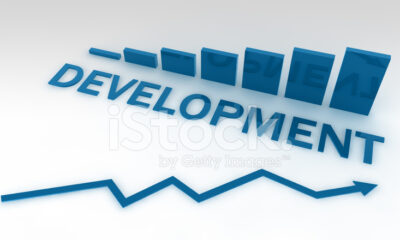
 News & Analysis3 years ago
News & Analysis3 years ago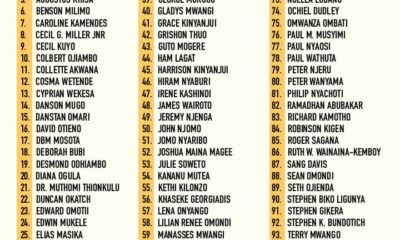
 Lawyers2 years ago
Lawyers2 years ago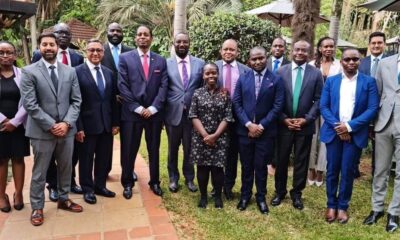
 News & Analysis3 years ago
News & Analysis3 years ago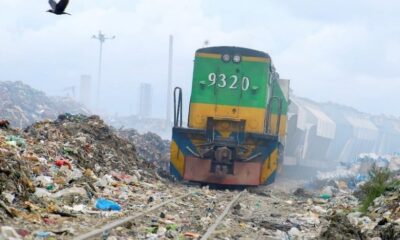
 News & Analysis1 year ago
News & Analysis1 year ago
 News & Analysis3 years ago
News & Analysis3 years ago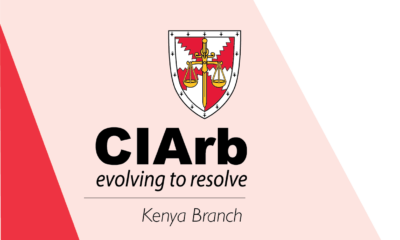
 News & Analysis1 year ago
News & Analysis1 year ago









